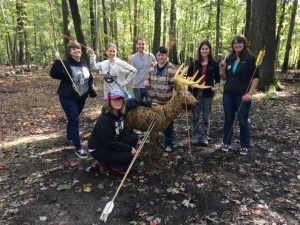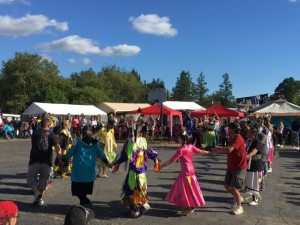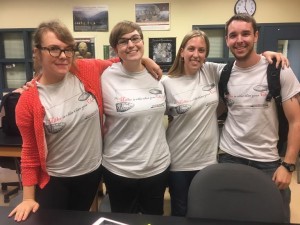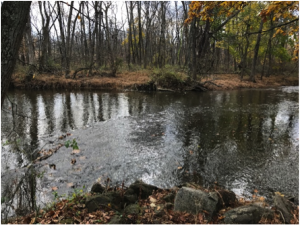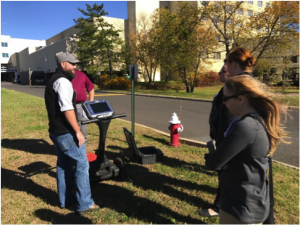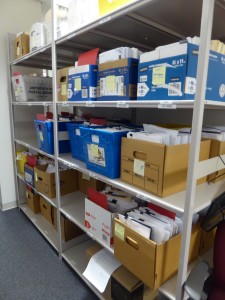By: Sami Taylor
Hey guys, my name is Sami. I’m a first year graduate student here at IUP. I received my BA in History at Christopher Newport University in Newport News, Virginia earlier this year
I first learned about IUP through my spring 2015 internship with the Cultural Resource Management program at Joint Base Langley-Eustis. After getting in contact with Dr. Ben Ford and discussing the program with him via email I decided to apply. Making my final decision to enroll was difficult to say the least. I couldn’t decide whether to attend an applied program or a more theory-heavy program. I spoke with a variety of my professors, archaeologists from around the east coast, and read every bit of information about IUP available. (At one point I even listened to a podcast that featured Dr. Ford.) After weeks of mulling it over, I made my decision to attend IUP and enrolled in classes. I’m so thankful I decided to attend IUP. The friendships, experiences, and knowledge I’ve acquired from attending this program is irreplaceable.
Since moving to Indiana my life has changed pretty drastically. I now spend around 80% of my time working on assignments, 10% of my time managing an online catalog, and the other 10% of my time goofing off with my fellow students. Though getting used to busy days and sleepless nights has been difficult, I don’t regret a second of it. I’ve learned so much about archaeology in only three months. I’ve made so many great friendships in both my cohort and the cohort ahead of us. My cohort and I were fortunate to be welcomed into this program and into this department with welcome arms. The community here in the IUP Anthropology Department is close-knit. We laugh together, cry together, and pull all-nighters together.
It would be really hard to mention just one experience I’ve since attending IUP so I’ll list some of my favorites:
- Attending my first Pow-Wow in Pittsburgh at the beginning of the semester with Heather.
- Going to ESAF in Langhorne with Gen.
- Going to the Meadowcroft Rockshelter with most of the graduate students.
- Spending long, homework-filled weekends in McElhaney with Danielle
and Heather (they’re usually full of not-so-funny youtube videos).
- Going to Trivia Night with Danielle, Heather, and Jared.
- Annoying Dr. Chadwick and Dr. Ford in their offices.
- Meeting members of previous cohorts and getting to know them.
- Drinking way too much coffee in Dr. Ford’s 9 AM class just to stay alive.
I can’t believe how much fun I’ve had this semester, and how much I’ve grown so far. I have no doubt that IUP is going to help me achieve my goals as an archaeologist. I’m really excited for what’s to come, and I know I’ll continue meeting so many great people along the way.
